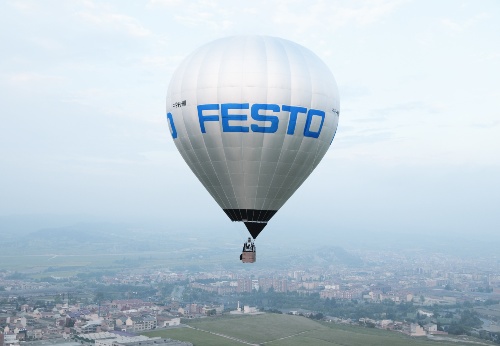Festo will be ushering in a new era of balloon travel at the opening of the 2008 International Berlin Air Show. Festo AG and the Technical University of Berlin are presenting the first commercial hot-air balloon to include innovative membrane flock insulating material. In this insulated balloon from Festo ‚– the world’s first double-walled balloon for commercial operation ‚– an air layer of only a few millimetres ensures that energy consumption is cut by more than half.

Conveying more passengers while consuming less energy ‚– this is made possible by the new insulated double-walled balloon from Festo. 99 years after the first International Air Exhibition (ILA) in Frankfurt am Main, a balloon can once again be seen at this year’s Air Show. With the insulated hot-air balloon, Festo is ushering in a new era of balloon travel.
A single layer of insulating material 6 mm in thickness cuts the fuel consumption of this hot-air balloon, with a volume of 3,000 cubic metres and a height of 25 metres, by more than half. The insulation is effected by the innovative membrane flock insulating material. The balloon’s fuel consumption is thereby reduced to around 15 kg of propane gas per hour. One or two propane gas cylinders can be dispensed with, thus creating capacity for additional passengers. Lower fuel consumption also means less noise ‚– the 4-megawatt burner, with the power rating of a small power station, only needs to be activated for one to two seconds each minute.
The foil insulation of the “HeiDAS” hot-steam balloon provided the inspiration for the development of an innovative insulating material for regular use on a fabric basis. aerofabrƒÂx is the world’s lightest and most effective insulating material. In addition to its use in balloons, this new material can be used to insulate aircraft or membrane structures.
::Design World::
Filed Under: Aerospace + defense, Green engineering • renewable energy • sustainability, Materials • advanced





Tell Us What You Think!